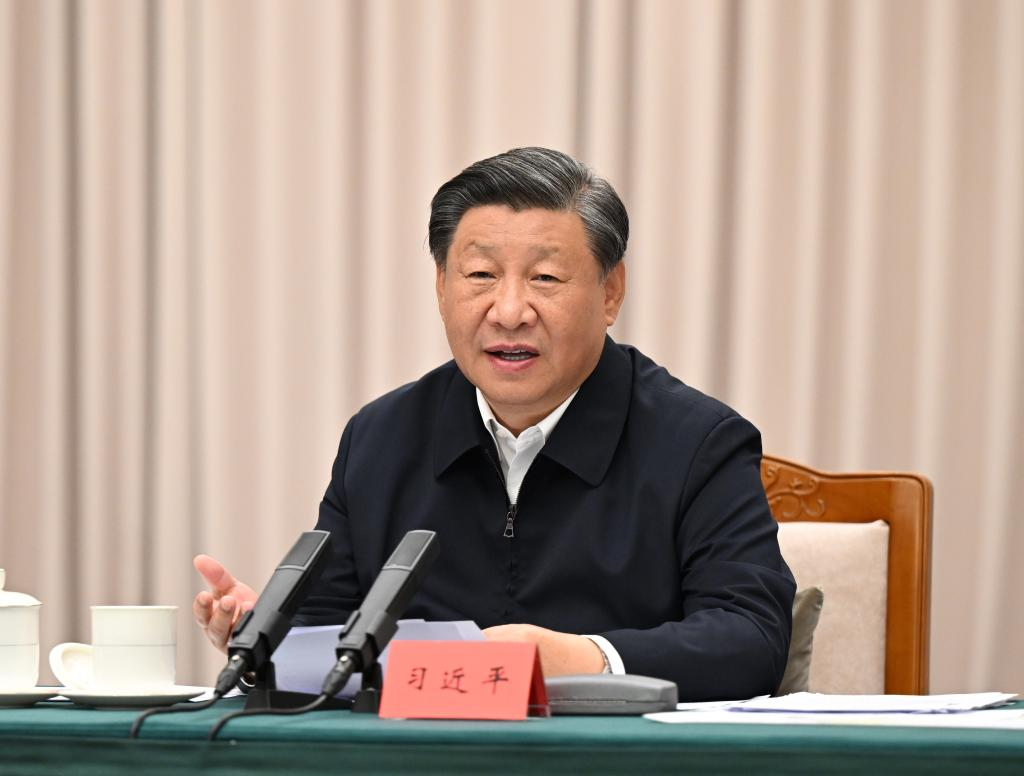“Charting a New Era for Northeast China’s Revitalization: A Commitment from President Xi Jinping”
In a pivotal gathering in Heilongjiang Province this week, Chinese President Xi Jinping underscored the urgency of “pennanting a fresh chronicle” for the comprehensive rejuvenation of northeast China. As the paramount leader of the nation, holding prestigious positions including the general secretary of the Communist Party of China (CPC) Central Committee and chairman of the Central Military Commission, Xi’s commitment bears significant weight for the country’s trajectory.
The historic session took place in Harbin, the provincial capital, with Xi emphasizing that the dawn of a new era demands more than just the central government’s support. It calls for a stir in the inherent vigour of the region, and a drive that fosters autonomy and self-motivation. His message was clear – to be pioneers in high-calibre and enduring development and that the call of the hour was bravery coupled with tangible actions.
Distinguished attendees included Cai Qi and Ding Xuexiang, both of whom are esteemed members of the Standing Committee of the Political Bureau of the CPC Central Committee. While Cai holds the mantle as the director of the General Office of the CPC Central Committee, Ding serves as the vice premier of the State Council.
In his address, President Xi reminisced about the positive strides provinces like Liaoning, Jilin, Heilongjiang, and the Inner Mongolia Autonomous Region have undertaken since a pertinent assembly in 2018. These territories, with their vast resources, formidable industrial bases, and advantageous geographical placements, have shown promising progress in their revitalization pursuits.
Xi then elaborated on the wealth of potential northeast China holds. Its bounteous resources, established industrial underpinning, geographically favourable positions, and colossal development promise signal the dawn of unparalleled opportunities. The onus now rests on leveraging these advantages to their utmost potential.
A cornerstone of Xi’s address was the symbiosis between industrial and technological innovations. The President ardently advocated for the region to steer its unique industrial systems towards contemporary standards by harnessing the power of scientific advancements.
Unpacking his vision further, Xi delineated three key tenets for the area’s comprehensive rejuvenation:
- Real Economy as the Bedrock: This serves as the structural foundation.
- Science & Technology Innovations as Crucial Drivers: They unlock the path ahead.
- Industrial Upgradation as the Directive: Guiding the future trajectory of the region.
Continuing his discourse, Xi delved into the need for a digital revolution. By transforming traditional sectors into more internet-centric models and fostering robust industrial chains and conglomerations, the region can enjoy accelerated growth. Emphasising this, Xi highlighted the pivotal role of emerging strategic industries. He underscored the significance of industries like new energy, advanced manufacturing, electronic information, and new materials.
Touching on energy, the President underscored harnessing the potential of clean energy options like wind, photovoltaic, and nuclear power. These not only promise sustainability but also align with global aspirations of a greener future.
Shifting his focus to agriculture, Xi conveyed the region’s paramount role in ensuring the nation’s grain stability. The objective, as he highlighted, was twofold: consistent abundance in regular times and unwavering reliability during dire situations.
Speaking of broader connectivity, Xi underscored the necessity of deeper integration with global initiatives like the Belt and Road. By doing so, northeast China can seamlessly weave into the tapestry of global economic circulations while simultaneously bolstering domestic economic flows.
Emphasising the infrastructure, Xi articulated the urgency of a holistic infrastructural revamp for the region. This includes augmenting the existing systems like oil and gas conduits, railways, power grids, and communication networks, while also ushering in next-gen innovations.
The discussion also waded into the territory of demographic development. A nation’s growth is indelibly linked to the quality of its populace. Thus, Xi accentuated the centrality of high-grade population development to truly rejuvenate northeast China.
Expounding on the demographic theme, Xi brought attention to public-centric childcare services, the alleviation of familial burdens associated with child-rearing, and the emphasis on maintaining balanced demographics. He underscored the requisite policy supports to galvanize talent, spark innovation, and retain gifted minds in the region.
But all these ambitions require an ambient environment. Xi stressed the need to foster a conducive political atmosphere, instil a robust business milieu, and rekindle the passion for diligence and enterprise. He urged the Party’s members to bolster private enterprises, champion transparency, and eradicate any semblances of corruption.
Furthermore, Xi emphasized that the unwavering leadership of the Party and its consistent strengthening remain pivotal for the region’s dreams to fructify. This sentiment was shared by Ding Xuexiang, who reemphasized the importance of aligning with Xi’s principles and the need to embrace a people-centric development paradigm, ensuring that citizens feel fulfilled, joyful, and secure.
In conclusion, as parts of northeast China grapple with the aftermath of severe floods, Xi’s call for post-disaster recuperation is timely. His vision for northeast China is not just about infrastructural or economic development; it’s about ensuring a secure, prosperous, and sustainable future for its people.
Read More:
